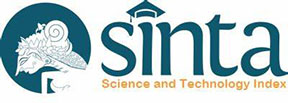EVALUASI KESESUAIAN LAHAN KENTANG DI KAWASAN RELOKASI SIOSAR KABUPATEN KARO
DOI:
https://doi.org/10.32734/jopt.v3i2.2966Keywords:
Evaluation of land suitability, the cultivation of potatoes, district KaroAbstract
Siosar relocation Region is located in the Subdistrict Merek in Karo with an altitude between 1490 - 1562 m above sea level. With this type of soil Andisol where land is hilly and undulating with a slope of + 37.5% and the climate type D3, leasing land from the Ministry of Environment and Forests covering an area of 144.44 ha reserved for heads of household 370 victims of the eruption of Mount Sinabung, through Decree of the Minister of the Environment life and Forestry No. SK.107 / MenLHK-II / 2015. This study aimed to evaluate the characteristics of the level of production forest land suitability for the cultivation of potatoes in the Region Siosar, to analyze the remedial efforts that need to be done in improving crop productivity and to create maps of the actual land suitability and potential land suitability potato plants. The method used was a survey method. unit of land based on soil map consists of 7 units of land analysis method is the method of comparing (matching). The results showed that the level of potential land suitability for crop potato plant (Solanum tuberosum) including marginally suitable (S3) covering an area of 156.54 ha, quite suitable (S2) covering 205.25 ha and is very suitable (S1) covering an area of 52.65 ha.Keywords: Evaluation of land suitability, production forests siosar, relocation eruption of Mount Sinabung, the cultivation of potatoes, sub brands Karo.






















